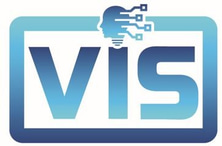IT vs Business Stewardship: Whose Job is Information Governance?
Unclear ownership between IT and business often stalls data governance efforts. This article explores how shared accountability, supported by real-world Australian examples, can drive better collaboration, improve data quality, and embed governance into everyday operations.


Data Governance is often misunderstood as a function that can be owned and executed by a single department—usually IT or Risk. In practice, it needs to be a shared responsibility, built around collaboration, enablement, and business value. The title "Breaking Down the Walls" refers to the longstanding divide between technology and business teams. These silos—while unintentional—often result in missed opportunities, poor data quality, and fragmented accountability.
When both sides align—technical teams with their system knowledge and business teams with their process and decision-making context—data becomes more usable, reliable, and valuable. It’s not just about compliance; it’s about giving every part of the organisation confidence in the data they use to make decisions, serve customers, and manage risk.
The recommendations outlined below are based on my experiences across sectors—utility providers, government departments, insurers, universities, and more. They are not theory; they are what works in practice, especially in complex, federated Australian environments.
Treat Data Governance as a Shared Capability, Not a Departmental Task
In a large energy utility operating across regional Australia, we observed a governance initiative stall because it was handed off to IT without business involvement. The business assumed IT would “manage the data,” while IT expected business teams to provide the definitions and rules. Neither did.
The turning point came when they created joint stewardship roles, co-owned by system analysts and business domain experts. This shifted the culture from “it’s your job” to “we do this together,” leading to increased metadata documentation, better lineage mapping, and improved report consistency.
So What?
The aligned ownership resulted in higher data trust scores across finance and asset management systems
There was increase in the usage of the enterprise catalogue due to relevant, contextualised content
And it resulted in greater collaboration during project delivery, reducing rework
Anchor Responsibility to Business Impact
Accountability improves when teams understand how their actions (or inaction) directly affect business outcomes. In a national retail chain, inconsistent product hierarchies across regions led to a mismatch in promotional reporting. The commercial team only realised the extent of the issue during a major board review.
This became the catalyst for linking governance tasks to real KPIs—sales accuracy, margin optimisation, and campaign performance. When data quality and stewardship responsibilities were integrated into product lifecycle processes, the issue was resolved at the source.
So What?
This reduced weekly reporting effort by 40%.
Improved trust in campaign analytics, leading to faster decision-making.
and it embedded data governance practices into core business planning cycles.
Embed Governance into Existing Workflows
Governance shouldn’t be a bolt-on. It works best when it’s part of existing tools and workflows—report approvals, change management, DevOps, and request tracking.
One Australian airways embedded governance checkpoints into their Jira-based change process. When a change was raised to the Passenger booking management and information System, reviewers were prompted to validate business definitions, data quality rules, and upstream/downstream impacts. This made governance part of delivery, not a blocker to it.
So What?
The governance tasks were completed as part of BAU, not ad hoc.
This improved the quality of data assets in the enterprise catalogue.
and accelerated audit-readiness and regulatory compliance with IATA and other regulators.
Recognise and Celebrate Contributions
Incentivising good behaviour goes a long way. At one of my customers, a “Data Champion” program recognised teams that improved data documentation, resolved long-standing data quality issues, or enhanced data literacy.
This was driven not by cash rewards, but internal recognition and visibility across the organisation. It created a grassroots movement around data, rather than a top-down mandate.
So What?
We raised visibility of data roles across clinical and operational teams.
We improved engagement in data cataloguing efforts.
and we created a data culture linked to pride and peer recognition.
Prioritise Enablement Over Enforcement
When people don’t participate in governance, it’s often because they’re unsure how. Creating bite-sized training, onboarding guides, and communities of practice builds confidence.
In the utility example mentioned earlier, we introduced monthly lunch-and-learn sessions focusing on one topic at a time—lineage, glossary terms, policy mapping. Over time, this created informal networks of data enablers who could support others across the business.
So What?
This delivered more accurate and complete metadata contributions.
It reduced dependence on the central data team.
and improved onboarding of new data users, stewards and analysts.
Start Small and Scale What Works
We need to focus our efforts where they matter most—critical reports, regulatory domains, high-risk data sets. That meant starting with product and pricing data for the retail organisation. It also meant focusing on finding and sponsoring enhanced and AI assisted data modelling and handling initiatives back by clear data governance roles and responsibilities. Once success is visible in one area, momentum builds, and scaling becomes easier and more sustainable.
So What?
Faster delivery of outcomes in high-impact areas
Clear return on investment for governance tools and roles
Repeatable models that can be applied across domains
Align Everyone to a Shared Outcome
Whether the driver is APRA CPS 230, OIAC APP 1988, GDPR, funding audits, or AI adoption, aligning around shared goals removes friction. When the conversation is about “how we use data to meet our mission or serve customers better,” it’s easier to get buy-in. In both case studies shared above, once governance was tied to performance metrics and service delivery, resistance reduced dramatically.
So What?
Well, this resulted in a stronger alignment between strategic goals and data initiatives
with less confusion about “who owns what”
and a stronger sense of purpose in data-related roles
What I learnt?
From my little experience of working with customers for 28 years solving many business challenges and needs with data solutions, I know that the future of data governance lies not in assigning tasks, but in building capability. When both technology and business teams share responsibility—and see the value in doing so—governance becomes a strategic enabler, not a compliance burden.
By breaking down silos, aligning to outcomes, and embedding governance into the rhythm of work, organisations can create data environments that are trusted, usable, and scalable.
If you have data challenges or need guidance in this area, please reach out to us using our contact us page for a FREE Consultation Session. We are always happy to help. Have a Great Day!
